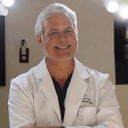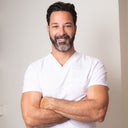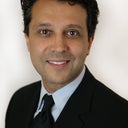I had rhinoplasty done back in 2000. I had a bump on my nose that was fixed. The surgeon did a minor refinement on my tip. He also lifted the angle of nose a little bit. I dont like the fact that i have one nostril bigger than the other. The surgeon didnt touch my nostrils. Is it possible to make the bigger nostril match the smaller one? Is this fixable?
Answers (24)
From board-certified doctors and trusted medical professionals
Dr. Kevin M. Robertson, MD, FACS

Dr. Kevin M. Robertson, MD, FACS
Board Certified Facial Plastic Surgeon
Answer
Dr. George A. Toledo, MD

Dr. George A. Toledo, MD
Board Certified Plastic Surgeon
Answer
Dr. Jacob Sedgh, MD

Dr. Jacob Sedgh, MD
Board Certified Facial Plastic Surgeon
Answer
Dr. Rian A. Maercks, MD

Dr. Rian A. Maercks, MD
Board Certified Plastic Surgeon
Answer
Dr. Sam Naficy, MD, FACS

Dr. Sam Naficy, MD, FACS
Board Certified Facial Plastic Surgeon
Answer
Dr. Daniel Reichner, MD, FACS

Dr. Daniel Reichner, MD, FACS
Board Certified Plastic Surgeon
Answer
Dr. Otto Joseph Placik, MD

Dr. Otto Joseph Placik, MD
Board Certified Plastic Surgeon
Answer
Dr. Eric M. Joseph, MD

Dr. Eric M. Joseph, MD
Board Certified Facial Plastic Surgeon
Answer
Dr. John M. Hilinski, MD

Dr. John M. Hilinski, MD
Board Certified Facial Plastic Surgeon
Answer
Dr. Amir M. Karam, MD

Dr. Amir M. Karam, MD
Board Certified Facial Plastic Surgeon
Answer
More Revision Rhinoplasty Questions
See all Revision Rhinoplasty Q&AWE SEND PRETTY
EMAILS
What’s trending? Who’s turning heads? Which TikTok myths need busting? We’ve got you. No fluff, no gatekeeping—just real talk. Get our free, unfiltered newsletter.